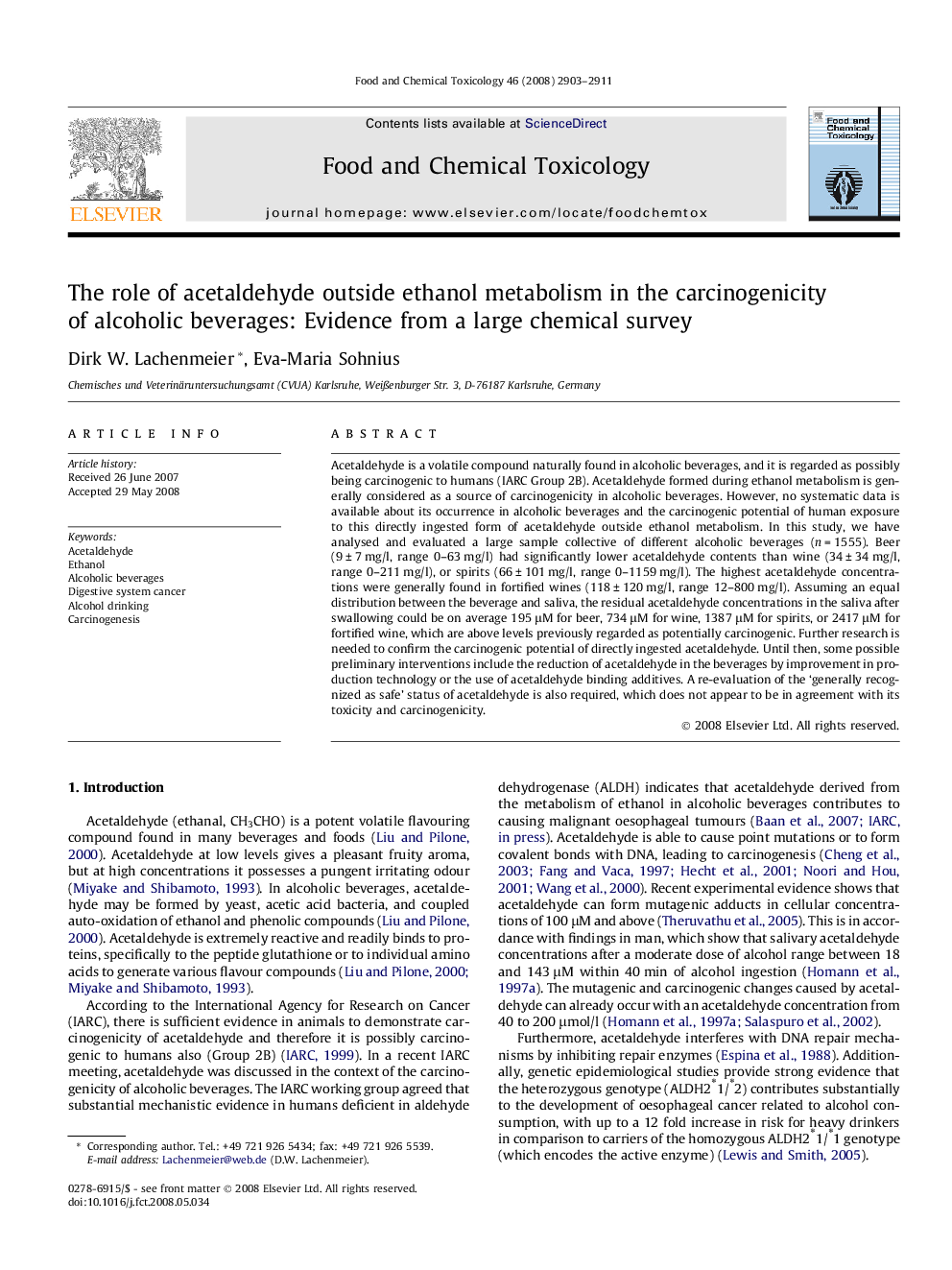| Article ID | Journal | Published Year | Pages | File Type |
|---|---|---|---|---|
| 2587186 | Food and Chemical Toxicology | 2008 | 9 Pages |
Acetaldehyde is a volatile compound naturally found in alcoholic beverages, and it is regarded as possibly being carcinogenic to humans (IARC Group 2B). Acetaldehyde formed during ethanol metabolism is generally considered as a source of carcinogenicity in alcoholic beverages. However, no systematic data is available about its occurrence in alcoholic beverages and the carcinogenic potential of human exposure to this directly ingested form of acetaldehyde outside ethanol metabolism. In this study, we have analysed and evaluated a large sample collective of different alcoholic beverages (n = 1555). Beer (9 ± 7 mg/l, range 0–63 mg/l) had significantly lower acetaldehyde contents than wine (34 ± 34 mg/l, range 0–211 mg/l), or spirits (66 ± 101 mg/l, range 0–1159 mg/l). The highest acetaldehyde concentrations were generally found in fortified wines (118 ± 120 mg/l, range 12–800 mg/l). Assuming an equal distribution between the beverage and saliva, the residual acetaldehyde concentrations in the saliva after swallowing could be on average 195 μM for beer, 734 μM for wine, 1387 μM for spirits, or 2417 μM for fortified wine, which are above levels previously regarded as potentially carcinogenic. Further research is needed to confirm the carcinogenic potential of directly ingested acetaldehyde. Until then, some possible preliminary interventions include the reduction of acetaldehyde in the beverages by improvement in production technology or the use of acetaldehyde binding additives. A re-evaluation of the ‘generally recognized as safe’ status of acetaldehyde is also required, which does not appear to be in agreement with its toxicity and carcinogenicity.
